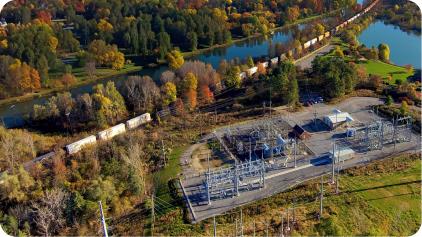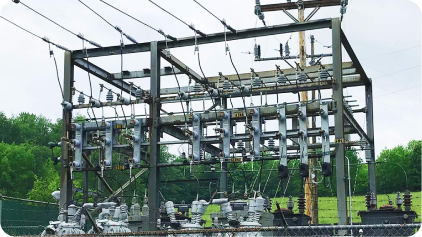We’re proposing a rebuild and modernization of the Wright Avenue and Clark Street Substations, which will provide increased reliability, capacity, and resiliency for Auburn, Aurelius, Fleming, Springport, and Union.
The Wright Avenue project addresses critical capacity and reliability issues at the aging substation in Auburn, Cayuga County. Originally built in 1953, it faces thermal overloading, voltage regulation challenges, and contingency risks impacting 2,500 direct customers and thousands more in the local sub-transmission network. Serving Disadvantaged Communities and potential Environmental Justice Areas, the project includes a full substation rebuild to support 8.6 MW of new load requests, 35% from commercial heat pump installations and 65% from economic development. This investment resolves reliability and asset condition concerns, enhances system resilience, and enables future load growth in underserved areas.
The Clark Street and Endicott Railway substations, located in Endicott, NY, are approximately seven miles west of Binghamton and one mile apart. The Clark Street substation, built in 1942, serves 4,300 customers, while the Endicott Railway substation, built in 1940, serves 1,800 customers within a designated Disadvantaged Community Area. Both stations have aging infrastructure which is over 83 years old and well beyond its expected service life, raising concerns about reliability and safety.
The project involves a comprehensive rebuild of the Clark Street substation and the decommissioning of the Endicott Railway substation, addressing these concerns and facilitating future load growth in underserved areas.



